Table of Contents
Tomatoes are fine to compost. They affect the composting process dramatically. Nitrogen can come from fresh tomato fruit and plant parts, and when dried to crisp, old tomato plants provide carbon to your composting microorganisms.
If a home compost isn’t available, you can send your tomatoes to industrial composting facilities. Food banks and shelters accept extra tomatoes still safe for human consumption. Upcycling — instead of sending them to landfills — is another eco-friendly approach to make use of tomato scraps.

Successful composting of tomatoes will nourish your garden, and reduce carbon footprint and household waste that contributes to landfills. Learn the nuances of processing tomato scraps, and other tips to avoid unexpected compost issues.
How to Compost Tomatoes
Tomatoes are kitchen staples used for a variety of recipes. For gardeners, tomato plants can linger beyond the end of the season, making them potential organic materials for composting.
However, be aware of the risks that come with tomato scraps: acidic compost, possible disease and pest spread, unintentional tomato regrowth from seeds, and a flooded compost pile. You can effectively minimize these issues by taking some precautionary steps.
Healthy tomato plants and their fruits are both fine to compost, but you should only include tomato scraps free from bacterial and fungal issues. Tomatoes are prone to late blight, mildew, and other common diseases such as fusarium wilt and bacterial canker.
Mismanaged compost heaps allow these plant diseases to survive and spread to your garden when you apply the finished compost.
Treat fresh tomato fruits, stems, and foliage as nitrogen-rich green materials when composting. If your tomato plant has dried and died, consider it a carbon-rich brown material.
Finally, correct preparation and composting conditions are essential when you’re composting tomatoes. Incorporate the tomato scraps in small amounts and never overload your compost bin or pile to avoid anaerobic decomposition and unpleasant smells.
Preparing Tomatoes for Composting
Start by collecting your compostable tomatoes and scrutinizing them for any nonbiodegradable stickers or tags. Because these labels contain vinyl and a plastic layer, they won’t decompose like the rest of the organic materials.
For faster decomposition, cut your tomatoes in small pieces using a kitchen knife. If a food processor is available at home, use it. Tinier pieces of tomatoes are faster to break down.
Tomatoes are primarily made of water. Expect liquids dripping out of the fruits once they are cut. Pair them with dry carbon materials like dried grass clippings, shredded dead leaves, unbleached cardboard, untreated sawdust, or wood chips, to absorb the moisture effectively.
You can use tomato stems and foliage either as green or brown materials in your compost pile. Before adding to compost, look for any signs of disease or pest.
Potentially diseased plants can be added in hot piles. Optimal temperatures are difficult to maintain, but it ensures that pathogens do not survive the composting process.
Note: Bacterial canker, fusarium wilt, and verticillium wilt will remain in the homemade compost — even in well-managed conditions. If you want to keep your compost safe and avoid worries, it’s best to exclude diseased and pest-infested tomato fruits and plants.
Be sure to shred the tomato plants. You can add them directly to your compost pile or bin as green materials, but (as above) you can also use them as brown materials. Simply scorch your old tomato plant pieces until crisp in the oven, or sun-dry them on a tray.
Optimal Composting Conditions for Tomatoes
When composting tomatoes, layer your compost materials as 30 parts of carbon to every 1 part of nitrogen. Offset the moisture in tomatoes with carbon-rich brown materials. Doing so will help maintain balanced moisture levels. Fruit wastes, and other vegetable matter are excellent sources of nitrogen.
Creating a well-balanced mix of carbon and nitrogen creates an environment conducive to composting microorganisms. The carbon acts as an energy source for the microorganisms, while the nitrogen aids their growth and development.
As mentioned, tomatoes contain a significant amount of liquid that can contribute moisture to your compost bin or pile. However, too much moisture can be harmful to your compost, leading to anaerobic decomposition and unpleasant odors.
If your bin or pile becomes too wet, integrate more carbon-rich materials and aerate the pile by turning.
Your hot compost piles should maintain temperatures between 130 and 170 degrees Fahrenheit. This temperature range can reduce the risk of sprouts if you’re composting the seeds. Regularly turning your compost heap improves airflow, which is essential for organic matter to decompose efficiently. Frequently monitor the pile’s internal temperature. You may use a long-stemmed outdoor thermometer to do so.
Sustain these conditions to successfully transform tomatoes into nutrient-rich soil amendment.
How Long Do Tomatoes Take to Compost?
In a well-managed compost pile, chopped tomatoes can decompose in two weeks. The moisture in the fruits will evaporate first, followed by the decomposition of the more fibrous parts like the flesh, seeds, and skin. Their decomposition rate depends on the pile’s conditions and the size of the tomatoes.
On the other hand, if you leave whole tomatoes out in the open, they may take anywhere from 1 to 5 months to completely break down.
How Tomatoes Affect the Composting Process
Tomato juices can greatly affect the moisture balance in your compost pile. The beneficial nitrogen from such fruits boosts the development and growth of microbes in the pile. In contrast, carbon from dried tomato stems and foliage serves as an energy source for these microbes.
Incorporate tomato scraps moderately, however. Overloading the pile can lead to unfavorable issues.
Impact on Decomposition
The fibrous parts of tomatoes like the flesh, seeds, and skins, take time to decompose. To accelerate decomposition, chop them into small pieces. Keep in mind that huge chunks of tomatoes are more challenging to break down and can potentially restrict proper aeration.
Microbial Activity
Depending on the state of your tomato waste, their carbon and nitrogen content stimulates microbial action. These two elements are crucial in decomposition. Maintaining a balanced mix of these carbon- and nitrogen-rich materials is essential for a good compost.
Chemicals from these nonbiodegradable labels can leak into your compost pile, and harm composting microorganisms.
Temperature and Moisture
Continuous microbial activity in your tomato compost escalates the pile’s internal temperature. The optimal temperature range of 130 to 170 degrees Fahrenheit can quickly break down the organic matter. Adding tomatoes in small quantities can further enhance this healthy microbial activity.
However, be mindful of the moisture content of tomatoes. When your compost bin or pile becomes flooded, anaerobic decomposition and rancid smells can occur. To mitigate this issue, include more carbon materials and turn your compost pile to improve aeration.
Potential Issues With Composting Tomatoes
Incorrect application of tomatoes can trigger some composting problems. Fortunately, you can minimize these potential problems by taking precautionary measures before and during your composting activity.
Will Composting Tomatoes Make Compost More Acidic?
The natural acidity of tomatoes can disrupt the pH levels of your compost pile. If you overload the pile with tomato scraps, the citric acid content can impede the proper decomposition of other organic wastes.
Hydrated white lime is a great addition to deacidify your tomatoes, especially when processing huge amounts. It dilutes the acidic nature of the fruit, neutralizing its pH levels.
Will Composting Tomatoes Attract Pests?
Including tomatoes in your compost pile may attract pests like ants, fruit flies, and rodents. It’s not just the sugar content, but also the rotting smell of tomatoes that draw in these unwelcome guests, potentially damaging the pile. To reduce this risk, use moderate amounts of tomato scraps, and bury them deep within the center of your bin or pile.
You can seal your bin or place a sheet over the open pile to keep out pests.
Will Composting Tomatoes Cause Odors?
Typically, tomatoes do not produce unpleasant odors in well-maintained compost with the right mix of carbon materials. However, their high moisture content can set off anaerobic decomposition if you mismanage your compost pile.
Aim for the ideal ratio of carbon and nitrogen materials and frequently stir the pile to prevent anaerobic conditions.
Methods for Composting Tomatoes
Tomatoes are suitable for most composting techniques. Explore your options below and see what works best for you!
Hot Composting
Tomatoes work well in hot piles, where microorganisms generate heat as they decompose organic wastes. This method yields finished compost faster, but it may not suit everyone. Constant monitoring of the pile’s moisture, and air flow is necessary when hot composting.
Temperature checks can be carried out by using a long-stemmed backyard thermometer. A pitchfork or a shovel is an effective tool when turning organic wastes.
Begin the process by mixing chopped tomatoes with other compost ingredients, aiming for a 30:1 carbon to nitrogen ratio. Positioning the tomatoes at the center bottom of the pile is beneficial, as it’s the part with the most intense heat and difficult for pests to reach. Aim to keep hot piles anywhere between 130 and 170 degrees Fahrenheit.
Cold Composting
If convenience is your priority, consider cold composting. Tomatoes work well in cold compost piles when prepared correctly and balanced with carbon-rich materials.
Starters in composting will love this method. Bacteria, fungi, insects, and other environmental elements are the main agents of decomposition in cold composting. It is a laid-back method, requiring little to no human intervention during the decomposition.
However, compost production is slower in cold piles due to the absence of heat. Since it takes more time to process, cold open piles are prone to pest problems. You can put a sheet to cover the compost, or seal your bin with a lid to prevent these critters.
Be aware: Tomato seeds are not suitable for cold composting as they can sprout in cold compost piles.
Vermicomposting
Red wigglers in your vermicompost bin will happily consume tomato scraps. They’ll eat most parts of the tomato (except for the seeds so omit them). Tomato seeds can sprout in your worm farm if you leave them untouched.
Apart from tomatoes, provide other food sources to keep the worms healthy. Dry worm bedding like shredded unbleached cardboard, dried leaves, coconut noir, and peat moss will absorb the juice from tomato scraps. Always chop your tomatoes to facilitate faster worm consumption.
Place your tomato scraps at the bottom of your worm bin to minimize risk of attracting pests, particularly ants and fruit flies.
Bokashi Composting
Another option when composting tomatoes is the Bokashi method. It involves a specialized inoculant bran that kickstarts fermentation of food wastes — including dairy and meat — under anaerobic conditions. A sealed Bokashi bin is compact and perfect for composters and gardeners with limited outdoor space.
Fermenting microbes from the Bokashi bran thrive in carbohydrates and proteins. Small amounts of chopped tomatoes (cooked or raw) are great in a Bokashi bucket.
Avoid overloading the bucket with too many tomatoes as they could produce excessive liquids.
Alternatives to Composting Tomatoes
Composting isn’t the only eco-friendly option when handling leftover tomatoes and end-of-season tomato waste.
Industrial Composting of Tomatoes
If home composting isn’t an option, send your tomatoes and other household waste to a commercial composting facility. These facilities process compost at high temperatures for industrial and agricultural usage. If drop-off points are inaccessible, opt for their curbside pickup services.
Get in touch with your local composting center to learn their guidelines for accepting kitchen waste like tomato scraps.
Upcycling Tomatoes
Fresh tomatoes that are still safe for consumption can be transformed into a healthy tomato juice. Taste of Home’s recipe includes chopped celery, green pepper, and onion. This cocktail can be served cold, and paired with a tinge of gin or vodka.
Another way to lengthen the shelf life of your juicy tomatoes is by turning them into homemade tomato sauce for canning. The Spruce Eats encourages the inclusion of lemon juice in their recipe to preserve the tomatoes longer and avoid bacterial growth such as botulism.
Tomatoes have valuable antioxidant and anti-inflammatory benefits due to its alpha-carotene, ascorbic acid, beta-carotene, lycopene content. These nutrients can effectively counter oxidative stress-induced free radicals caused by pollution and sun exposure on the skin. You can create your own tomato face mask by mixing tomato pulp with other skin-nourishing ingredients such as cucumber, lemon, honey, oats, olive oil, sugar, or turmeric.
Feeding Tomatoes to Chickens and Livestock
As a general rule, unripe tomatoes, and tomato flowers, leaves, or stems are not safe for animal consumption. Solanine found in tomato plant tissue is toxic to chickens and other livestock and pets. The substance is common to most nightshade, like potato plants.
Chickens can safely consume leftover tomato fruit including the flesh, peels, and seeds. Serve small bits of ripe or overripe tomatoes as occasional treats coupled with other food sources.
Cats and dogs can be fed minimal amounts of chopped red, ripe tomatoes. Antioxidants, fiber, minerals, and vitamins from the fruit will boost their digestive and overall health. However, do not overfeed them because acid from the tomatoes can upset their stomach.
Additionally, pigs, cows, goats, and sheep can eat ripe tomatoes in moderation.
Disposal Options for Tomatoes
Properly dispose of your tomato scraps in an appropriate garbage bin if home composting and other eco-friendly alternatives are impossible. Seal them in a nonbiodegradable bag to prevent pests.
If you have excess tomatoes that are fine to consume, donate them to local food banks or shelters.
What Tomatoes Shouldn’t Be Composted?
Discard tomato fruits and plants that are diseased and pest-infested. Dangerous pathogens and pests can persist in the compost, and potentially reach your vegetable garden or flower beds.
Watch out for diseases such as bacterial canker, bacterial speck, and bacterial spot. Homegrown or organic tomatoes are also prone to fungal diseases like anthracnose fruit rot, buckeye rot, and early and late blight. Safely dispose of the affected plant away from your healthy plants.
If you’re aiming for a completely organic compost, segregate tomato scraps treated with chemical fertilizers, herbicides, pesticides, or synthetic treatments, and consider other disposal options.
Composting issues such as pest problems, unpleasant odors, and slow decomposition can arise from dairy, meat, or oil in cooked tomatoes. Traditional compost bins and open piles can be particularly susceptible to these problems.
Bokashi buckets, however, can efficiently process tomatoes cooked with other food items and seasonings.
Safety and Precautions When Composting Tomatoes
When doing traditional home compost piles, avoid anaerobic decomposition when processing tomatoes. Achieve this by balancing tomato scraps with dry, carbon-rich materials that can absorb the excess liquids from tomatoes. Carry out the best management practices in composting.
Handle moldy or rotten tomatoes carefully, especially if you have immunity or respiratory problems. Wear a mask and gloves before composting to mitigate any health risks.
Remember to thoroughly wash your hands with soap and running water after your composting activity.
FAQ
Can I compost whole tomatoes?
Whole tomatoes are fine to compost, but they take a long time to break down. Chopping your tomato scraps into small pieces will save time, and increase the efficiency of your compost pile. Microorganisms can access these organic wastes easier if they have a smaller surface area.
How can I neutralize the acid in tomatoes?
Sprinkle a thin layer of hydrated white lime over your tomato scraps to neutralize its pH levels. Some composters also use other alkaline materials like crushed egg shells if a hydrated white lime isn’t readily available.
Can I compost tomato vines?
Tomato vines are great additions to your compost bin or pile. You can use them fresh as green compost materials or dried as brown compost materials. Chop the tomato flowers, leaves, and stems to accelerate their decomposition. Build your bin away from the reach of animals and pets to avoid incidents of solanine toxicity.




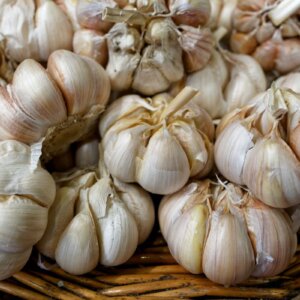


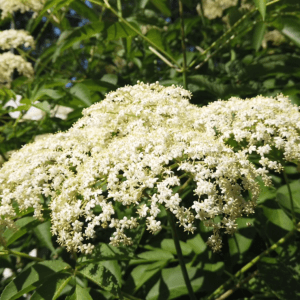





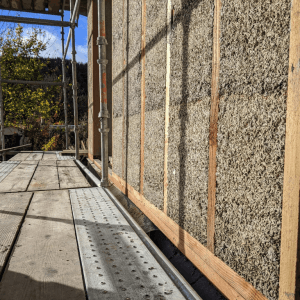

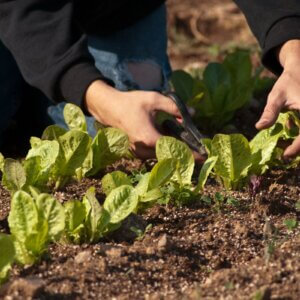


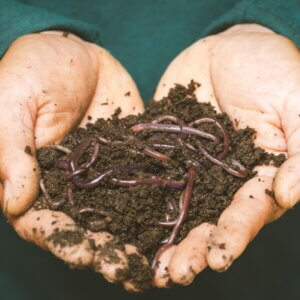






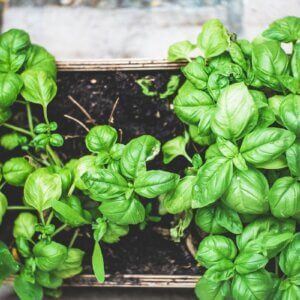
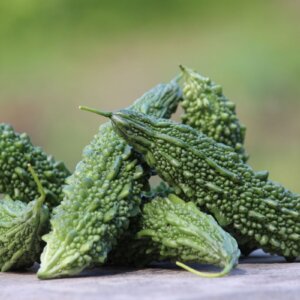


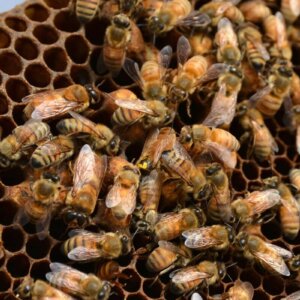






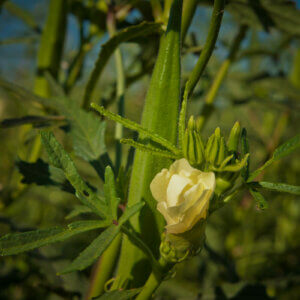





Should decomposing tomatillos for seed storage follow the same procedure as decompsotind regular tomato’s?